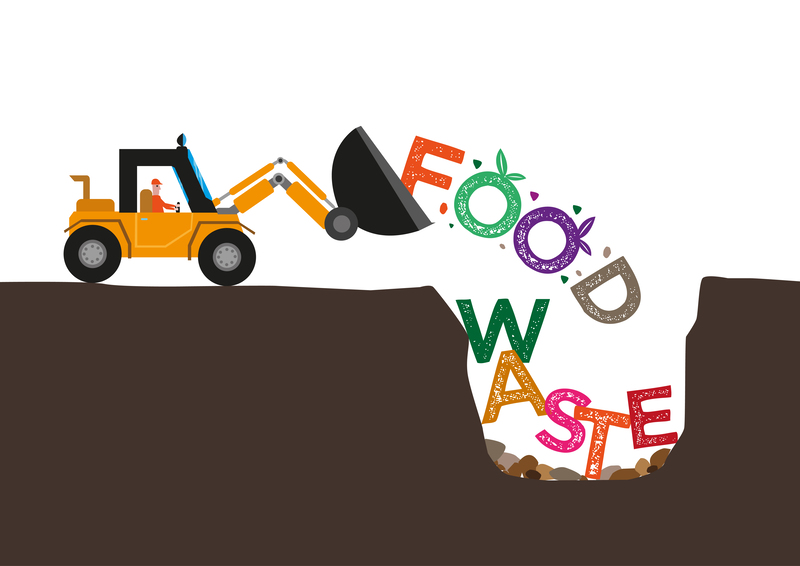Understanding the Magic of Glass Recycling
In a time when environmental sustainability is more crucial than ever, glass recycling offers an incredible opportunity to reduce waste and conserve resources. But what is it about glass recycling that makes it so magical? In this article, we'll delve into the fascinating world of recycling glass, exploring the processes involved, its numerous benefits, and how it contributes to a healthier planet.
The Incredible Process of Glass Recycling
To truly appreciate the significance of glass recycling, we need to understand the process involved. Turning discarded glass into new, usable products requires a series of steps designed to maximize efficiency and minimize waste.
Collection and Sorting
The first step in recycling glass involves collecting and sorting it by color: clear, green, and brown. Glass is usually collected through curbside recycling programs, drop-off centers, and collection stations at public places. Sorting is crucial because varying colors of glass melt at different temperatures, which can compromise the quality if mixed incorrectly.
Cleaning and Crushing
- Cleaning: Once collected, the glass is cleaned to remove impurities such as labels, caps, and other materials that could contaminate the recycling process.
- Crushing: The cleaned glass is then crushed into small pieces known as cullet. Cullet is essential as it melts at a lower temperature compared to raw materials, thus saving energy.
Melting and Forming
After crushing, the cullet is mixed with virgin raw materials like sand, limestone, and soda ash to form a batch. This mixture is then heated in a furnace at temperatures of up to 1700 degrees Celsius.
Once melted, the molten glass is molded into new shapes. Depending on the intended product, the glass can be blown, molded, and formed into containers, fiberglass, or other items. The final result is new glass products ready for consumer use.

Benefits of Glass Recycling: Environmental and Economic Impact
Recycling glass isn't just about preventing waste from accumulating in landfills. It has several environmental and economic advantages that make it a preferred method for conserving resources and reducing the carbon footprint.
Environmental Benefits
- Energy Conservation: Recycling glass consumes approximately 40% less energy compared to producing new glass from raw materials. This results in significant reductions in the consumption of fossil fuels.
- Reduction of CO2 Emissions: By using recycled glass, the industry can reduce CO2 emissions by about 20%. This helps mitigate climate change, making it a greener choice.
- Conservation of Natural Resources: Recycling glass preserves raw materials like sand, limestone, and soda ash, thus reducing the environmental impact of mining activities.
- Landfill Diversion: Each ton of recycled glass can save over a ton of natural resources and reduces landfill space usage, preventing soil and groundwater contamination.
Economic Benefits
- Job Creation: The glass recycling industry provides numerous employment opportunities in collection, processing, and manufacturing.
- Cost Savings: Using recycled glass in production is often cheaper than new material, lowering manufacturing costs.
- Industry Growth: A consistent supply of recycled glass can encourage investment and growth within the industry, leading to innovation and efficiency.
The Role of Consumers in Glass Recycling
While the glass recycling process is carried out by specialized facilities, consumers play a critical role in its success. There are several ways individuals can contribute and enhance glass recycling efforts.
Participate in Local Recycling Programs
One of the easiest ways to support glass recycling is by participating in local recycling programs. Ensure you're well-informed about your area's recycling guidelines, and separate glass products properly to avoid contamination.
Practice Consistency and Awareness
Practice recycling consistently and stay educated on the sustainable disposal methods. By understanding what can and cannot be recycled, consumers can reduce contamination and bolster efficiency in the glass recycling process.
Spread Awareness
The influence of word-of-mouth and education in communities can greatly enhance recycling efforts. Talk to friends, family, and neighbors about the importance of glass recycling and encourage them to prioritize eco-friendly behaviors.

Challenges and Solutions in Glass Recycling
Although recycling glass offers numerous benefits, the industry faces challenges that need to be addressed to optimize its advantages.
Contamination Issues
Contamination remains one of the primary challenges, as foreign materials can affect the quality of recycled glass. Solutions include improving public education around what materials can be recycled and enhancing sorting technologies.
Evolving Technology
While technology in glass recycling plants is advancing, investing in more efficient sorting, cleaning, and melting processes is essential to further minimize waste, reduce energy consumption, and improve product quality.
Market Development
The development and expansion of glass recycling markets can be incentivized through government policies and incentives, ensuring a stable demand for recycled glass products.
The Future of Glass Recycling
The future of glass recycling looks promising, with continuous improvements and innovations in technology paving the way for even more efficient processes. Commitment from governments, industries, and consumers is essential to ensure the sustainable growth of this valuable practice.
With heightened environmental consciousness, the effort to recycle glass responsibly not only conserves resources but also secures a healthier planet for future generations. That's the magic of glass recycling -- turning waste into wealth, one bottle at a time.
In conclusion, understanding and participating in the glass recycling process is a small step each of us can take that leads to monumental changes in preserving our environment. The magic lies not just in transforming discarded glass into useful products but also in the collective efforts contributing to a sustainable future.